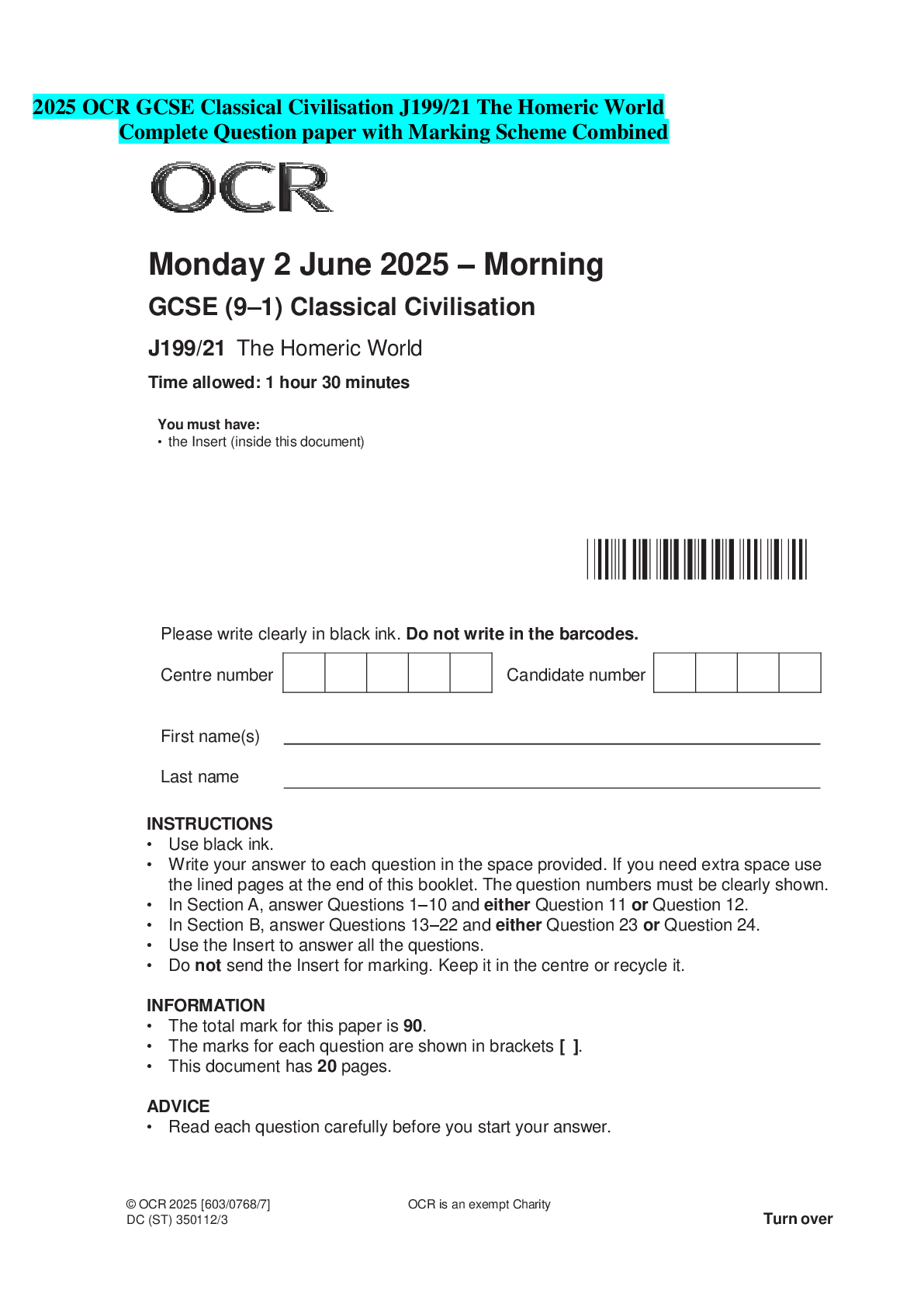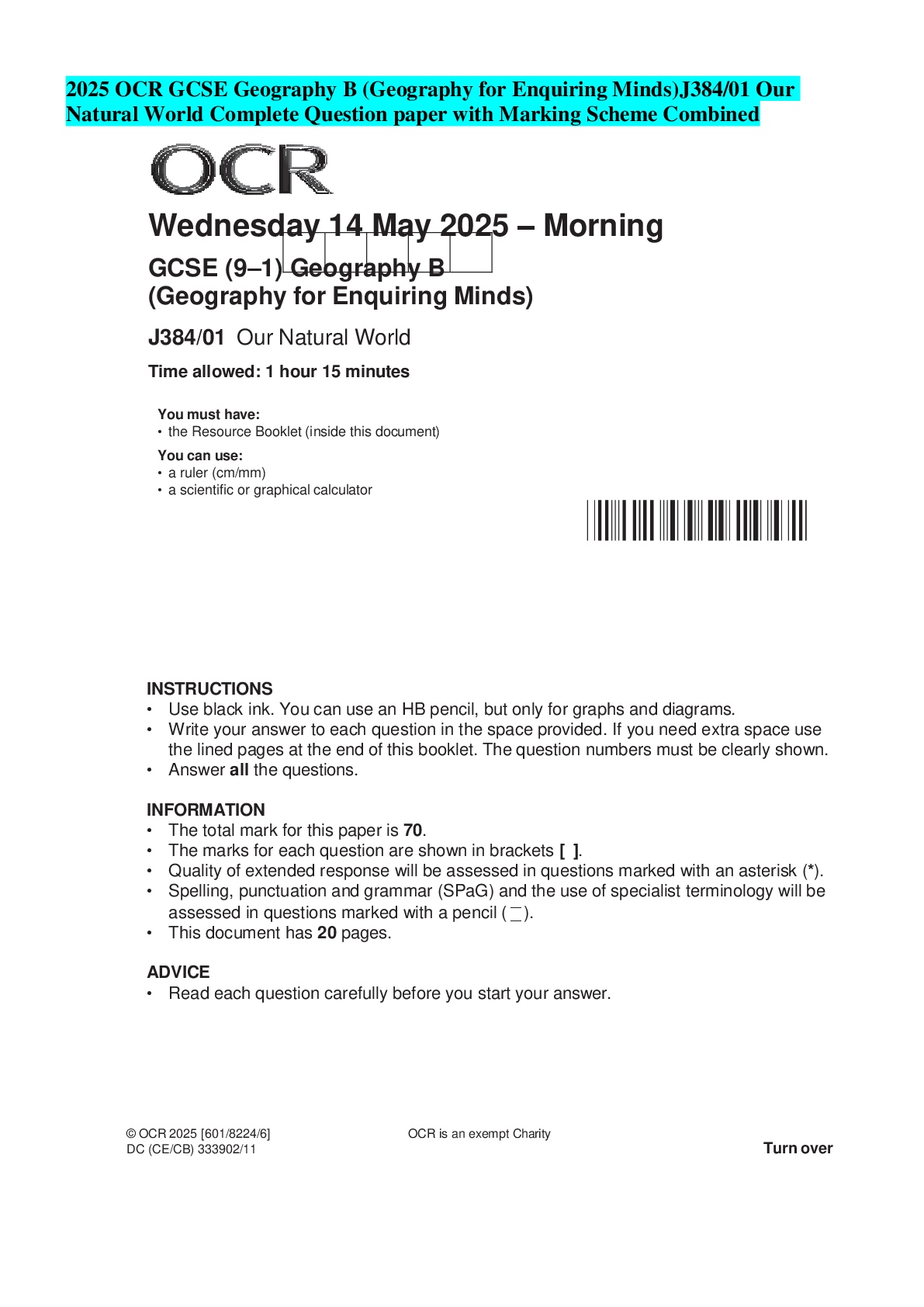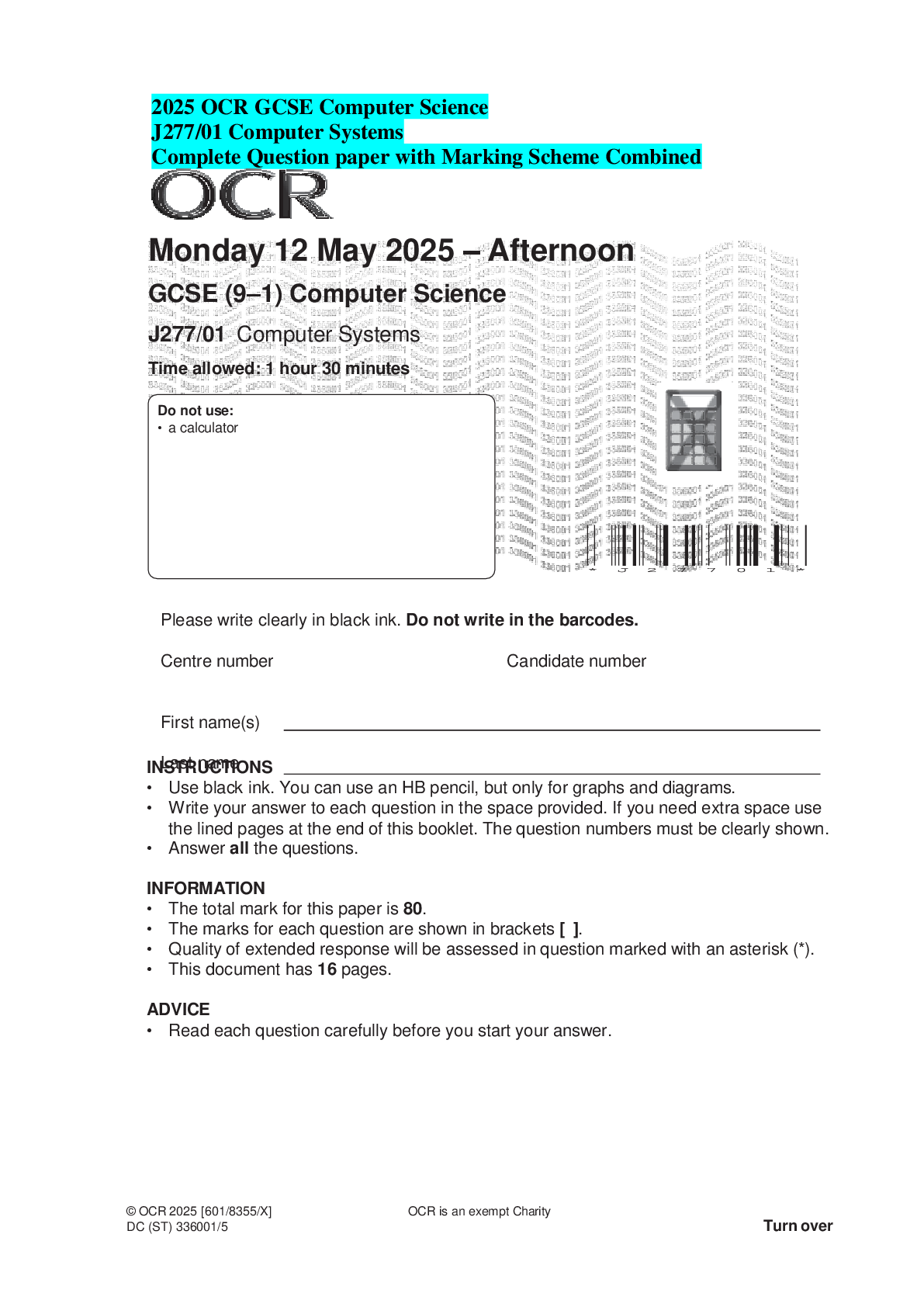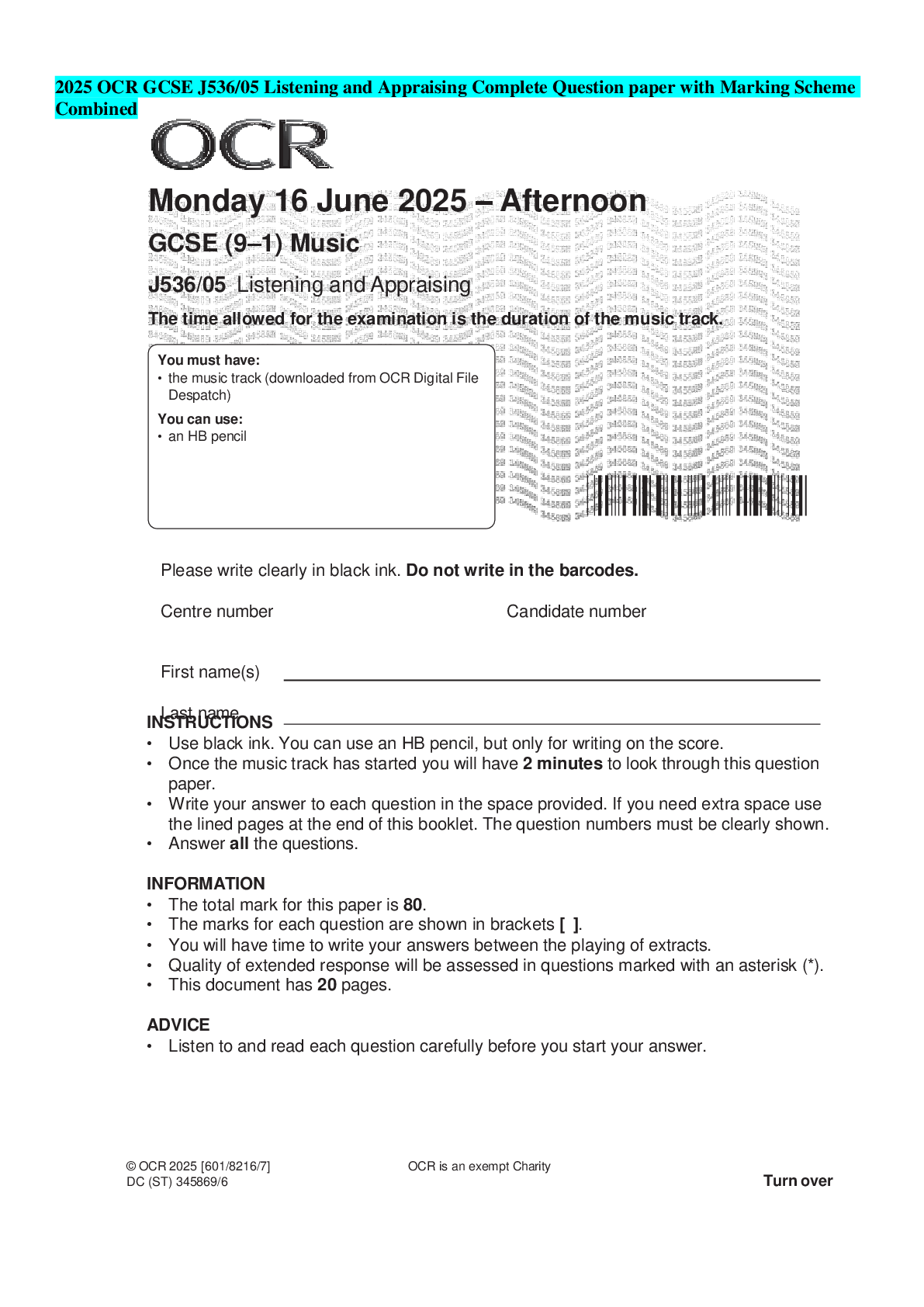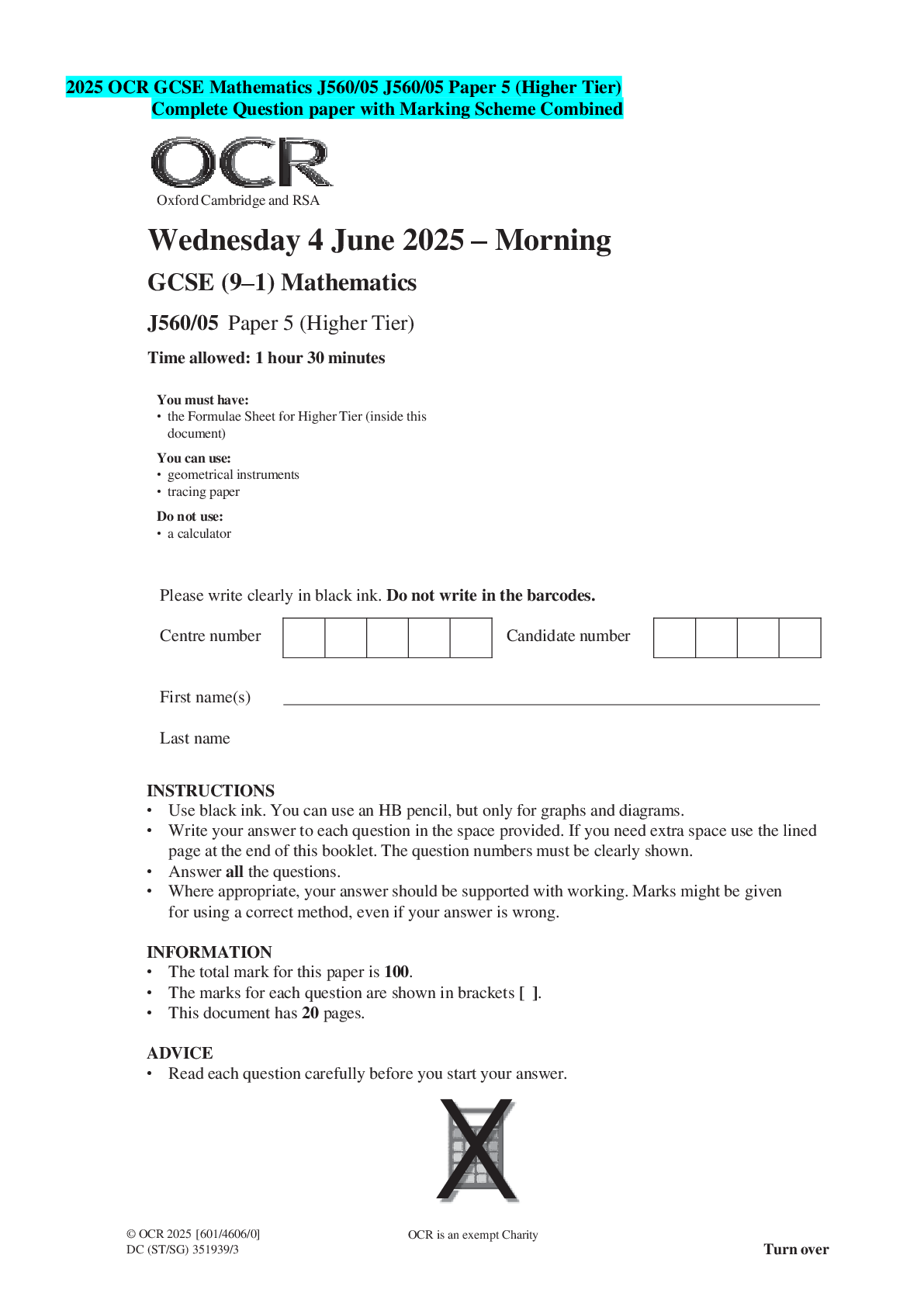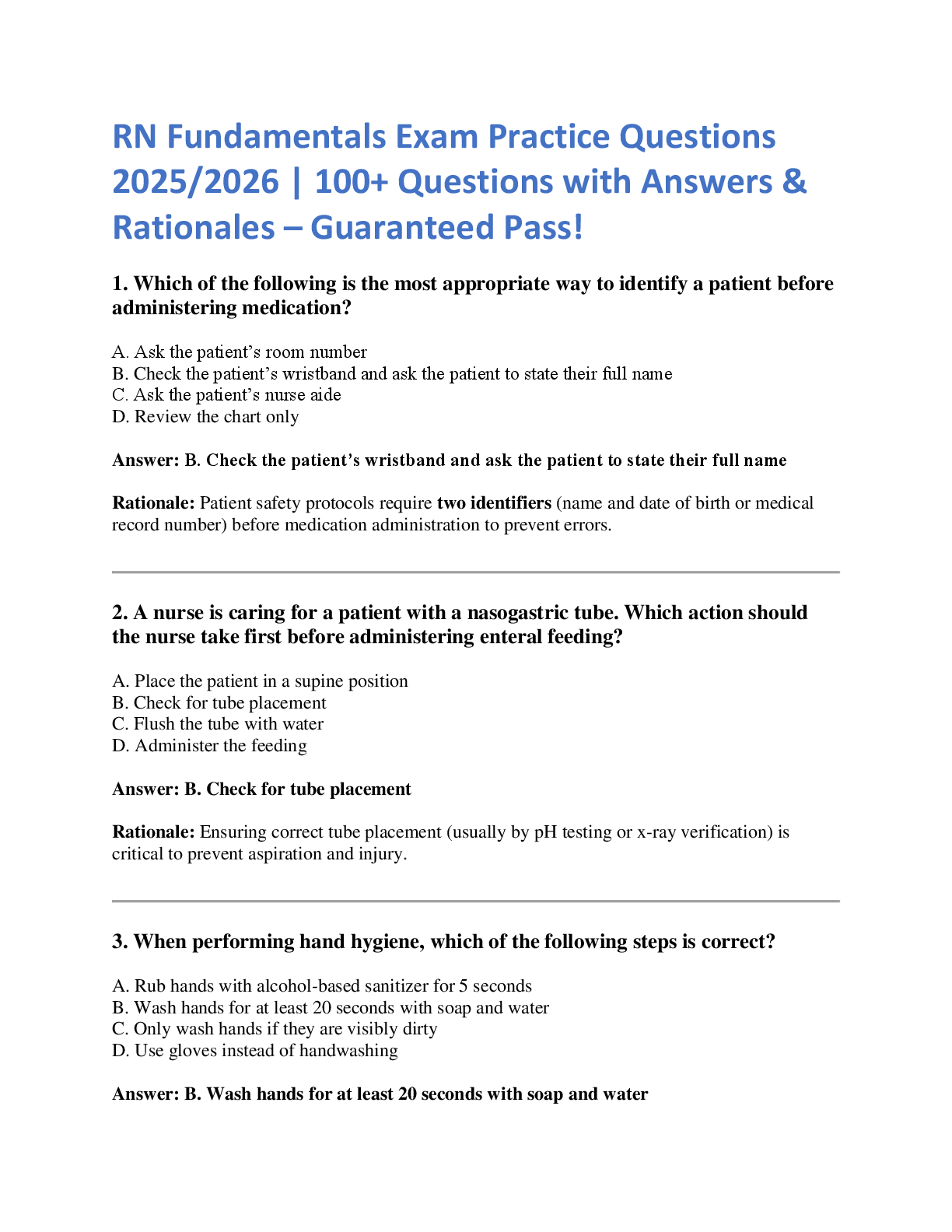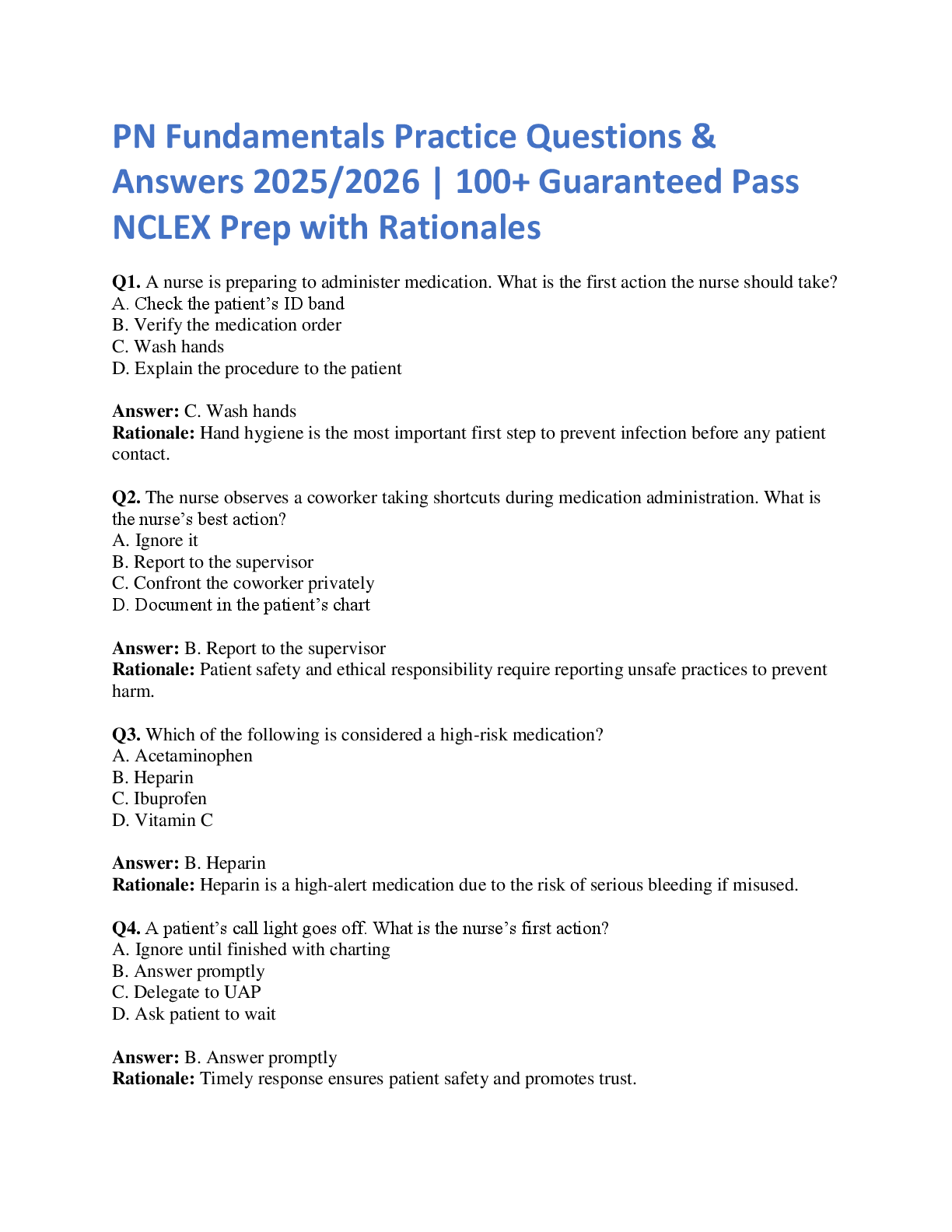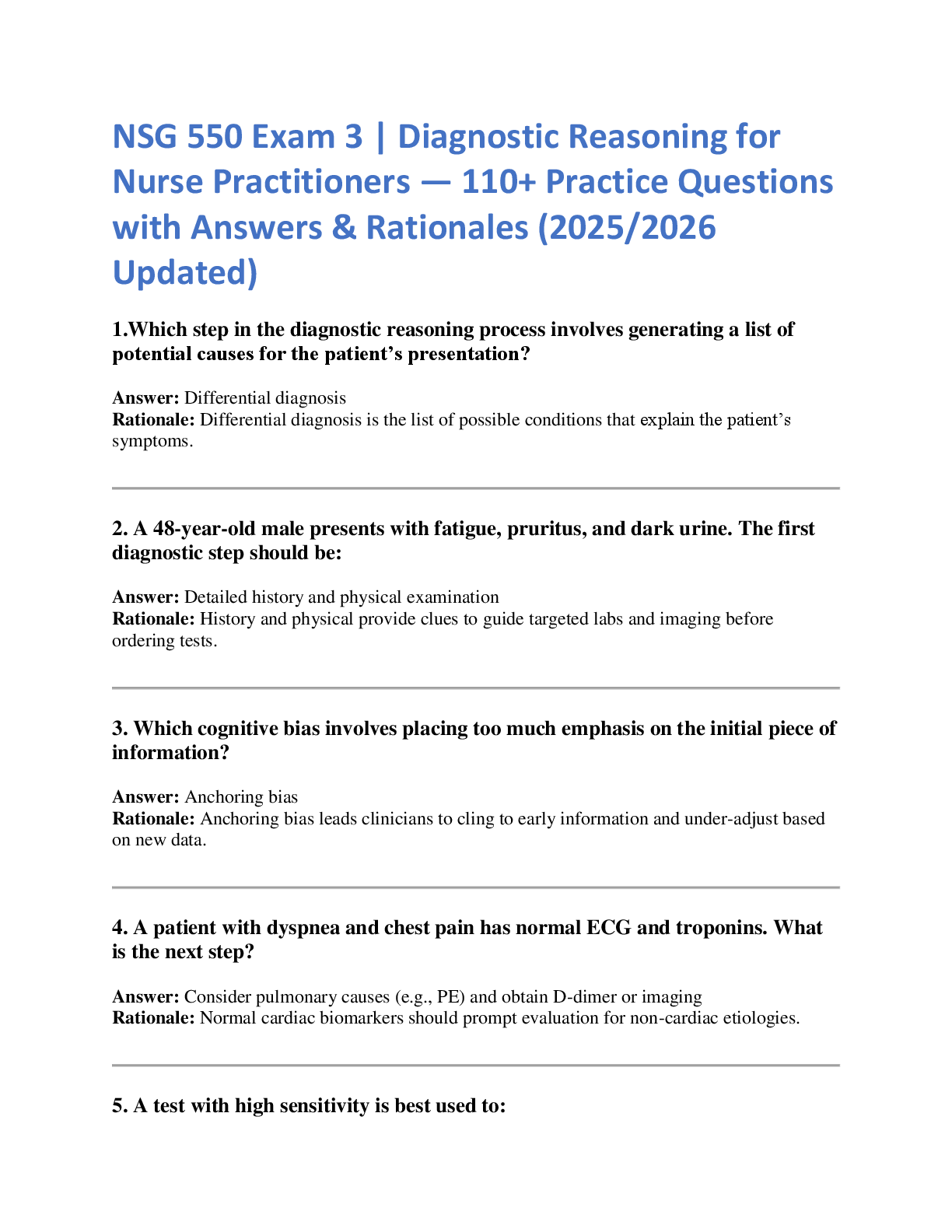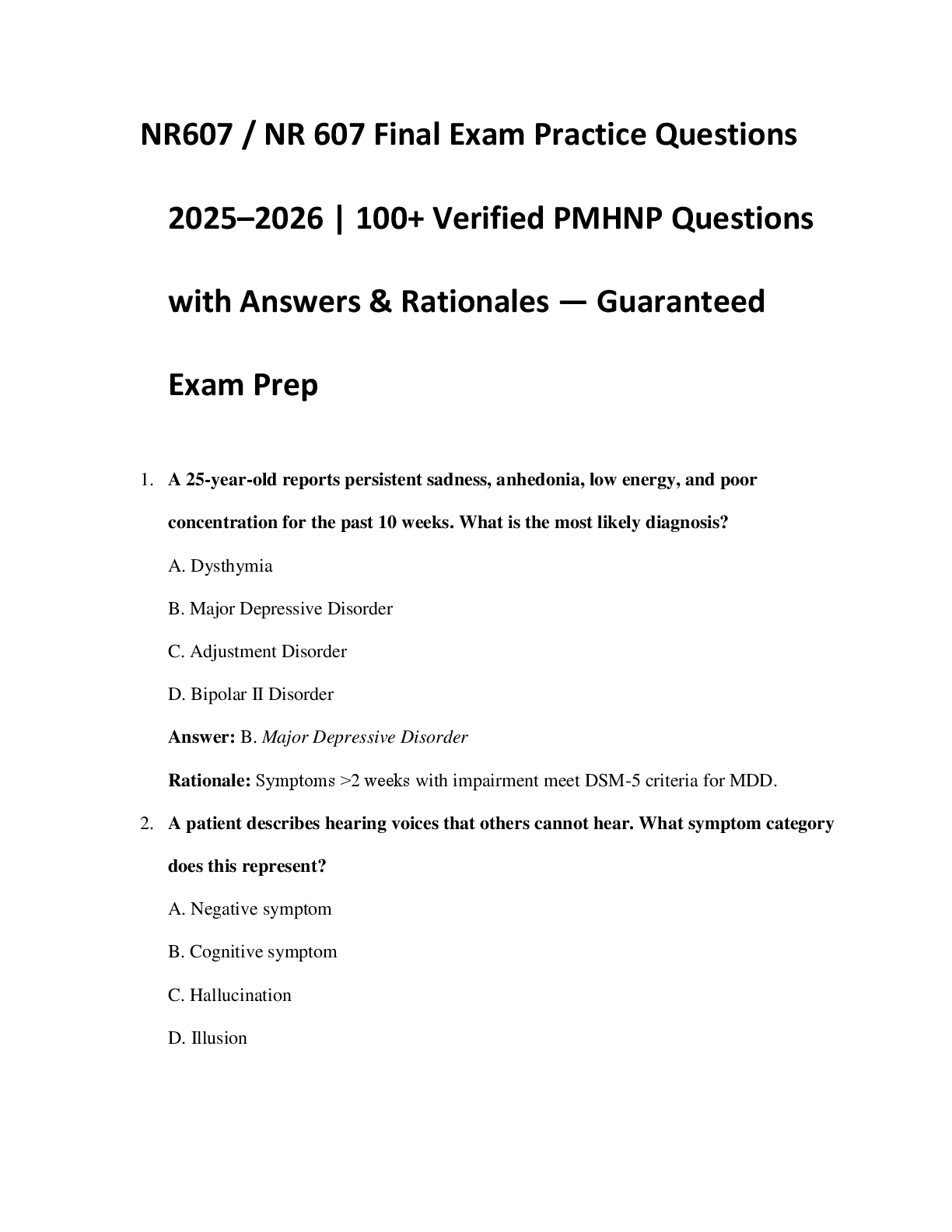*NURSING > EXAM REVIEW > Maternity Child Nursing Exam 1 (All)
Maternity Child Nursing Exam 1
Document Content and Description Below
1) Know what is folic acid does during pregnancy, and why do we take it, what it helps with.(Sam) Folic Acid · Folic acid deficiency is associated with an increased risk for spontaneous abortion, ... abruptio placentae, and fetal anomalies, such as neural tube defects. A folic acid supplement may be necessary to prevent maternal and fetal effects. Pg 1693 · Most anemia is prevented by administration of iron and folic acid. (pg 1660) · Folate deficiency is the primary cause of megaloblastic anemia during pregnancy. · Folic acid is essential for cell duplication and for fetal and placental growth. It is also an essential nutrient for the formation of red blood cells. (1666) · Maternal needs for folic acid doubles during pregnancy in response to the demand for greater production of erythrocytes and for fetal and placental growth. · The best sources of folic acid are kidney beans, lima beans, and fresh, dark green leafy vegetables. Because the demand for this vitamin increases during pregnancy, supplementation with folic acid (400 μg [0.4 mg]/day) is recommended for all women of childbearing age, and 600 μg (0.6 mg) is recommended when pregnancy is confirmed · Women who have had a previous child with a neural tube defect should take 4 mg of folic acid for 1 month before and during the first trimester of pregnancy 2) Nursing process; including collection of data ADPPIE phases (Sam) Nursing process Assessment 142 PDF · Not only physiologic data but also psychological, · Social, and cultural data relevant to life processes. Nurses must assess the belief · systems, available support, perceptions, and plans of other family members in an effort to provide the best nursing care. · During the assessment phase, three activities take place: collecting data, · grouping the findings, and writing the nursing diagnoses. Two levels of nursing assessment are used to collect comprehensive data: (1) screening (database) assessment; and (2) focused assessment. Screening Assessment · Performed during the initial contact with the person’s baseline data, describes the individual's health status before interventions begin Focused Assessment · Used to gather information that is specifically related to · An actual health problem or a problem that the patient or family is at risk for · Acquiring performed at the beginning of a shift and centers on areas relevant to the patient's diagnosis and current status Nursing Diagnosis Provides a basis for nursing accountability for interventions and outcomes. actual nursing-diagnosis describes a human response to a health condition or life process affecting an individual, family, or community risk nursing-diagnosis describes a human response to a health condition or life process that may develop in a vulnerable individual, family, or community wellness nursing-diagnosis describes a human response to levels of wellness in an individual, family, or community that has the potential for improvement. Planning Setting Priorities (1) determining what problems need immediate attention (i.e., life-threatening problems) and taking immediate action; (2) determining whether there are problems that call for a physician's orders for diagnosis, monitoring, or treatment; (3) identifying actual nursing diagnoses, which take precedence over at-risk diagnoses ● Establishing Goals and Expected Outcomes pg 145 PDF Broad goals do not state the specific outcome criteria and are less measurable than outcome statements. Implementation pg 145 PDF Is the action phase of the nursing process Evaluation 146 PDF · Evaluation determines how well the plan worked or how well the goals or · outcomes were met · To evaluate, the nurse must assess the status of the patient · and compare the current status with the goals or outcome criteria that were · developed during the planning step · How well the patient is progressing toward goal achievement and makes a decision. Should the plan be continued? Modified? Abandoned? · Are the problems resolved or the causes diminished? Is another nursing diagnosis more relevant? 3) Genetic health/and what the nurse does when working with child bearing family; how they counsel for genetic health (Sam) · Inherited characteristics are passed from parent to child by the genes in each · chromosome. Pg 548 PDF · Classified according to whether they are dominant (strong) or recessive (weak) · Both normal and abnormal · Hereditary characteristics are transmitted by these mechanisms. 4) How could you help a woman avoid exposure to things that can harm the fetus, and what they are? (Sam) Alleles · humans have matched pairs of chromosomes · they have two alleles for each gene · paired alleles may be identical (homozygous) or different (heterozygous). · Tay-Sachs (Jewish pple) · Cystic fibrosis (primarily whites of northern European descent) and · Sickle cell disease Things that harm the fetus are called teratogens and they can be got when mother is exposed to chemicals so the best way is to prevent the mom from coming in contact with these items If a new trait emerges -The offspring who receives the new version of the gene will have it in all somatic cells and can transmit it to future generations. In the case of a dominant gene, one copy is enough to cause the trait to be expressed. [Show More]
Last updated: 3 years ago
Preview 1 out of 31 pages
.png)
Buy this document to get the full access instantly
Instant Download Access after purchase
Buy NowInstant download
We Accept:

Reviews( 0 )
$10.00
Can't find what you want? Try our AI powered Search
Document information
Connected school, study & course
About the document
Uploaded On
Aug 31, 2021
Number of pages
31
Written in
All
Additional information
This document has been written for:
Uploaded
Aug 31, 2021
Downloads
0
Views
90


